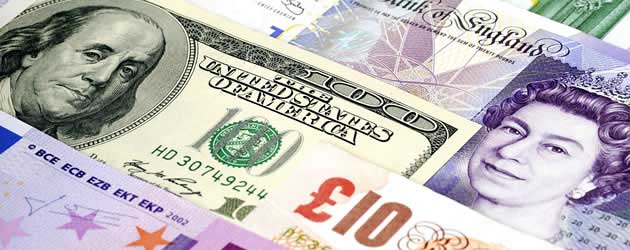
The Pound to US Dollar exchange rate (GBP/USD) grew by around 0.4 cents last night as the Wall Street Journal published an article indicating that the Federal Reserve is unlikely to announce a tapering of its QE3 programme at next week’s policy meeting.
The influential article was written by Jon Hilsenrath, who is seen as a knowledgeable authority on Federal Reserve policy. His close ties with the Federal Reserve have helped him to foreshadow almost every single stimulus decision during the post-recession era of quantitative easing.
The article read like a warning sign to markets: ‘Don’t worry, the Fed is not about to give up on monetary easing”. Hilsenrath said that even if a tapering of Fed stimulus did take place, it would be a slow drawn-out process rather than a rapid shock:
“An adjustment program won’t mean that it will end all at once, officials say, and even more importantly it won’t mean that the Fed is anywhere near raising short-term interest rates”.
The article helped to reassure traders that the Fed is not about to cut the power supply of its risk-boosting QE3 scheme, which led to a 1.2% increase in the Dow Jones Industrial Average and a 1.5% jump in the Standard & Poor’s 500 Stock Index.
However, the WSJ piece reflected less positively on the US Dollar. Quantitative easing is seen to devalue the ‘Greenback’ because as the Fed saturates the financial system with electronically printed money and purchases assets, the yield on US Treasuries decreases, which in turn makes the US Dollar less attractive to speculative traders.
In response to the report in the Wall Street Journal the Pound to US Dollar exchange rate climbed 0.4 cents to settle around the 1.5720 level.
The Euro grew by around 0.3 cents to 1.3370 against the US Dollar
The Euro grew by around 0.3 cents to 1.3370 against the US Dollar, whilst the New Zealand Dollar gained 0.7 cents, the Australian Dollar strengthened by 0.5 cents and the Canadian Dollar rallied by 0.25 cents.
The Sterling to US Dollar exchange rate had held relatively firm around the 1.5680 mark for the majority of the day as some moderately strong US economic data helped to hold back the newly-energized Pound.
US Advance Retail Sales expanded at a faster-than-anticipated rate of 0.6% during April, beating the market consensus of just 0.4%. The 3-month high score helped to raise optimism that the US economy could be on the verge of a meaningful recovery from the setback of the damaging government spending cuts earlier on in the year.
US Initial Jobless Claims also came in better-than-expected at 334,000, compared to forecasts of 345,000, improving the outlook for the US labour market, which the Federal Reserve holds as an important gauge of the US economy. Matt Kaufler of Federate Investors said:
“We had a decent Jobless Claims number and Retail Sales were pretty solid. Both were encouraging signs of the ongoing mending of the US economy”.
Later on today the US Producer Price Index is expected to print at 1.4%, the Industrial Production figure is predicted to come in at 0.2% and the University of Michigan Confidence survey is likely to hold steady at 84.5.

Comments are closed.